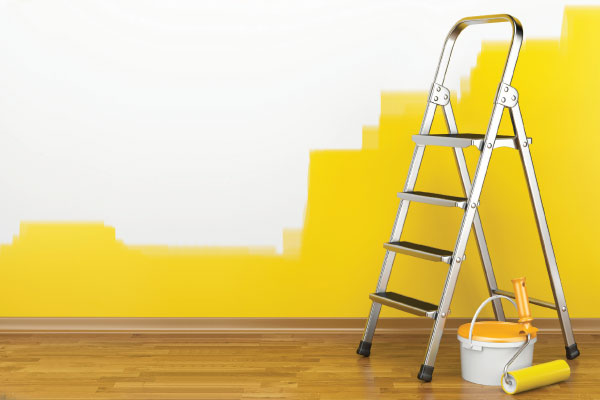There’s an impressive variety of not just paint colours but textures and finishes available in the market. Ankita Mamgain finds out more about special paints for your specific needs.
In addition to protection from the elements, paint, in many ways, provides the same for your walls and furniture as clothes do for your body. Just as you consider the season, functionality and comfort, mood and trends when picking your outfit, similar thought goes into choosing the paint for a particular area or object. How dry or wet will a place be, the scope for creativity, different finishes and textures and, of course, what’s new in the market? Paint technology has come so far that some truly innovative products are available. These high-tech options not only look great but also provide excellent solutions for some specific needs.
Bathrooms and Kitchens
All bathrooms and kitchens have one thing in common – they get wet. Kitchens have to deal with the added problem of grime that settles on the walls over time. Not all paint types can withstand the type of humidity created by baths and showers or an oily coating. In both cases, it is important to stay away from paints that will tend to develop mould due to excessive moisture.
Paint companies have designed special emulsions that can withstand high moisture and temperature conditions. The market is filled with products that claim to be water-resistant or even waterproof and resist the growth of mould and mildew and are hence ideal for these places.

And yes, they are, in most cases, effective as they provide a special layer of protection but in addition to getting the right paint, you also need to ensure that there no blockages or leaking pipes. Both bathrooms and kitchens need good ventilation to get the inside air out.
A 100 per cent acrylic, water-based paint with soft gloss finish is usually recommended for kitchen and bathroom walls and ceilings. This can provide excellent protection against stains and mould. Ensure the formula has some preservative, which is mildew resistant. Read the paint label for the following properties: stain and scrub resistant, washable, high adhesive strength and you’ve really hit the jackpot if it says anti-bacterial protection as well.
Kids Rooms
This is another area to which paint companies have devoted a lot of research and development, coming up with innovative solutions. One of them is the ‘dry-erase’ type of paint that is both fun and functional, turning the walls and doors into activity zones for the kids with scribbles easily removed. Dry-erase paint can be used to spark creativity, keep track of tasks or to-dos or just be a bit silly.
Paint the doors to your kids’ bedrooms to post reminders, chores or loving notes of encouragement or make the toy chest just as fun as the things inside. If you have some extra paint left over, consider using it on non-traditional objects, like chairs or picture frames.
This paint will take at least a week to dry and cure. It is best if you don’t remove any tape until it has finished drying, as this can lead to unexpected results depending on the state of the paint when you lift it.
You will also need to purchase high-quality dry-erase markers. The ordinary ones don’t write well and will be a huge disappointment when your kids are all ready to go Picasso on the walls.
Doors and Cabinets
There’s a plethora of choices in the market that you might want to try for your doors and cabinets. However, before you start, you need to decide the colour scheme and if you want the cabinetry to lead or follow the space composition. Once you’ve decided the palette, the finish should be your next concern.
For wooden surfaces, most manufacturers offer painted, stained, glazed, antiqued and distressed finishes. Stains come in a variety of pigments and allow the wood’s natural grain to show. A glaze is a semi-transparent wash of colour applied over a paint to add dimension and depth. Glazes offer heavier contrast and less consistency and appear darker in the crevices, highlighting detailing. You can even go for an antiqued patina, which is hand-rubbed for added character, allowing cabinetry to appear old beyond its years.
If paint is your choice, picking the right one is key. Traditionally used oil paints, though tough to clean, dry harder than latex, providing a more durable finish for trim and moulding on kitchen cabinets.
A new, waterborne alkyd formula is becoming increasingly popular for this purpose as well. These go on like an oil paint (smooth flow and levelling), have the low VOCs (volatile organic compounds) and clean up like latex with just soap and water instead of paint thinner or mineral spirits.





